Share
When was the last time you sat through an entire YouTube ad? Probably never.
Today’s shoppers can smell a promotional ad from miles away. And they have the means to bypass these boring marketing campaigns.
The bottom line: traditional marketing methods aren’t as effective as they once used to be.
User-generated video content is the antidote. UGC entertains, educates, and actively shares your customers’ unfiltered opinions. So, how do you use UGC videos for your brand?
We created this guide to help you unlock the power of user-generated videos. Let’s begin.
5 essential UGC video types for eCommerce brands
There are plenty of successful examples of UGC videos today. But if this is your first time entering this space, things can get a little confusing. That’s why we’ve curated five of the most popular UGC content formats with examples to show you how they work.
1. ‘In-action’ UGC videos
Best for: Sports & athleisure brands, electronic accessories & gadgets
In-action videos don't bother explaining the product. Instead, they show people using and enjoying it. And that does two things:
- First, it highlights active community engagement.
- Second, it creates a sense of authenticity through brand humanization.
Even so, this kind of community-driven content works best if you offer something that sees frequent physical use. Bikes, cameras. electronic accessories—you name it.
GoPro is an excellent example here. Its official Instagram page is littered with user-generated content, including snapshots, posts and unedited footage. But its recent ‘Line of the Winter’ announcement with in-action UGC footage takes the cake.
What's interesting is that GoPro used that video to announce the event. Then, it signed off on a hashtag contest (with really appealing rewards) to invite more content creation from its loyal customer base.
2. Reviews and testimonials
Best for: Performance apparel, fashion accessories, sportswear
UGC videos that feature reviews or testimonials are infinitely more powerful than their written cousin.
And research supports that. 82% of people were convinced to buy a product after watching a video. Why?
To start with, text blurbs can’t capture product quality and customer satisfaction effectively. For instance, how do you convey fabric texture through a written review?
But when you watch someone talk about a hoodie or a pair of socks they bought recently, you can see their micro-expressions and hear their unfiltered opinion—everything comes through.
Here’s the perfect example for UGC reviews. Remember Apolla from Shark Tank? With Videowise, they revamped their entire UGC review catalog. Now, it showcases compelling visual testimonials from happy customers.
The result? Deeply embedded social proof and improved customer trust. And, of course, we have to mention the 12% CVR boost with over 400,000 USD generated in order revenue.
.png?width=2000&height=1177&name=UGC%20videos%20on%20website%20(2).png)
3. Product unboxing & haul videos
Best for: Stationery & drinkware
‘Unboxing and haul’ UGC videos are one of the most common types of consumer-generated media.
People love display platforms because they let you showcase various stationery items such as journals, stickers, bookmarks, and more.
Why can't you just promote them by showing them in use? Because that would take the attention away from the product and shift it to an activity. And that doesn't work well. After all, who wants to see scrawly, handwritten notes on beautiful, off-white sheets?
To understand this better, look at Notebook Therapy's collaboration with Rabch.jpg. It's a short clip of her unboxing stationery goods to Taylor Swift's 'August'.
Now, you and I may not be journaling addicts. But to those who are, that reel hits all the right spots.
4. Tutorials & how-to guides
Best for: Cosmetic products, beauty & wellness brands, digital accessories
Video tutorials allow you to answer and resolve common customer queries and issues through user-generated content.
They also teach new customers about product use cases. For instance, let's assume your cleansing lotions have a specific application procedure. A new customer would benefit if they knew about it from the beginning.
Here’s how SOSU Cosmetics leveraged shoppable videos to create UGC tutorial videos. This directly impacted audience engagement for website visitors. As a result, the brand generated $750,000 with a CVR of 9.9% from visitors who engaged with video.
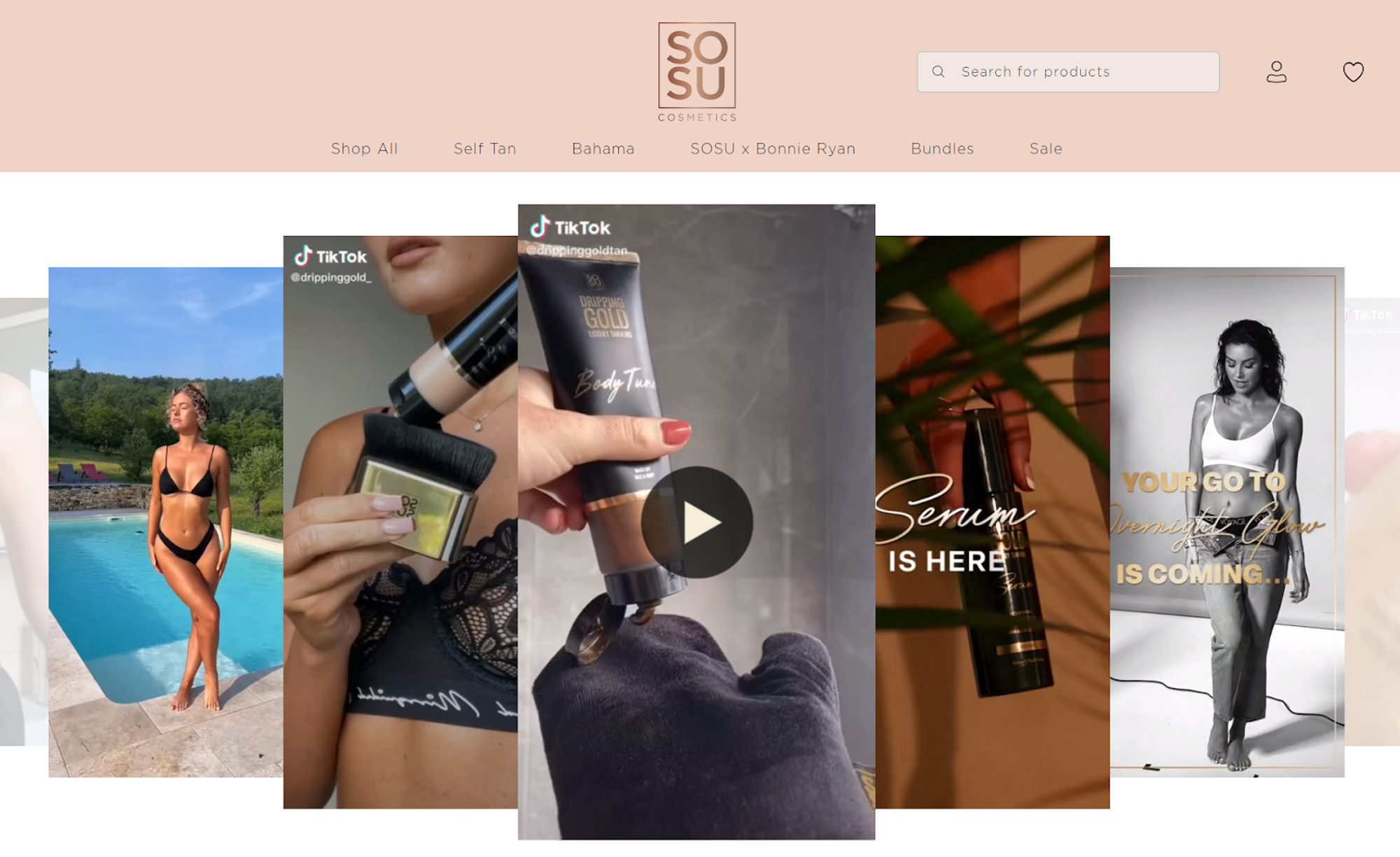
5. ‘Day in the life’ & lifestyle vlogs
Best for: Versatile (works across most product categories)
Like it or not, we've made products and brands a part of our lives. And that's what lifestyle or 'day in the life' vlogs capitalize on.
This format of consumer-generated media gives people a glimpse into the content creator/influencer's daily routine. The creator uses your products in a sneak peek or shows them in the background.
It's subtle and yet compelling. More importantly, people see their favorite creators and streamers engage directly with your brand.
Here’s one such example from Gyasi Linje. It’s a ‘day in the life’ vlog that has him showcasing his new MacBook.
5 tips for encouraging your audience to create UGC videos
Now that you have an idea about some of the ways you can use UGC videos, it’s time you start motivating your audience to create such content.
Here are a few tips to get you started:
1. Offer non-monetary incentives
Solely relying on monetary rewards to motivate your audience to create UGC videos can eat into your marketing strategy.
A better alternative is to drive community engagement through non-monetary benefits. Here are some of the things you can do:
- Run a hashtag contest on social media sites with rewards like early product access
- Offer loyalty points or exclusive invites to upcoming brand events
- Hand out time-limited coupons & vouchers for specific product categories/bundles
- Send gift baskets/goodie bags to creators of viral content
- Feature particularly compelling customer stories on your site (more on this in a bit)
In short, the more campaign incentives you offer, the more submissions you get. That builds an entire backlog of user-generated material to fuel your brand storytelling efforts, build social proof and improve customer trust.
Dr. Dennis Gross is a perfect example here. As part of a multipurpose solution, the team built interactive quizzes that highlight the brand's story, value and mission. Then, UGC videos featuring relatable customer experiences were made shoppable and embedded on the site.
This way, visitors could freely explore product benefits through clear-cut visual references.
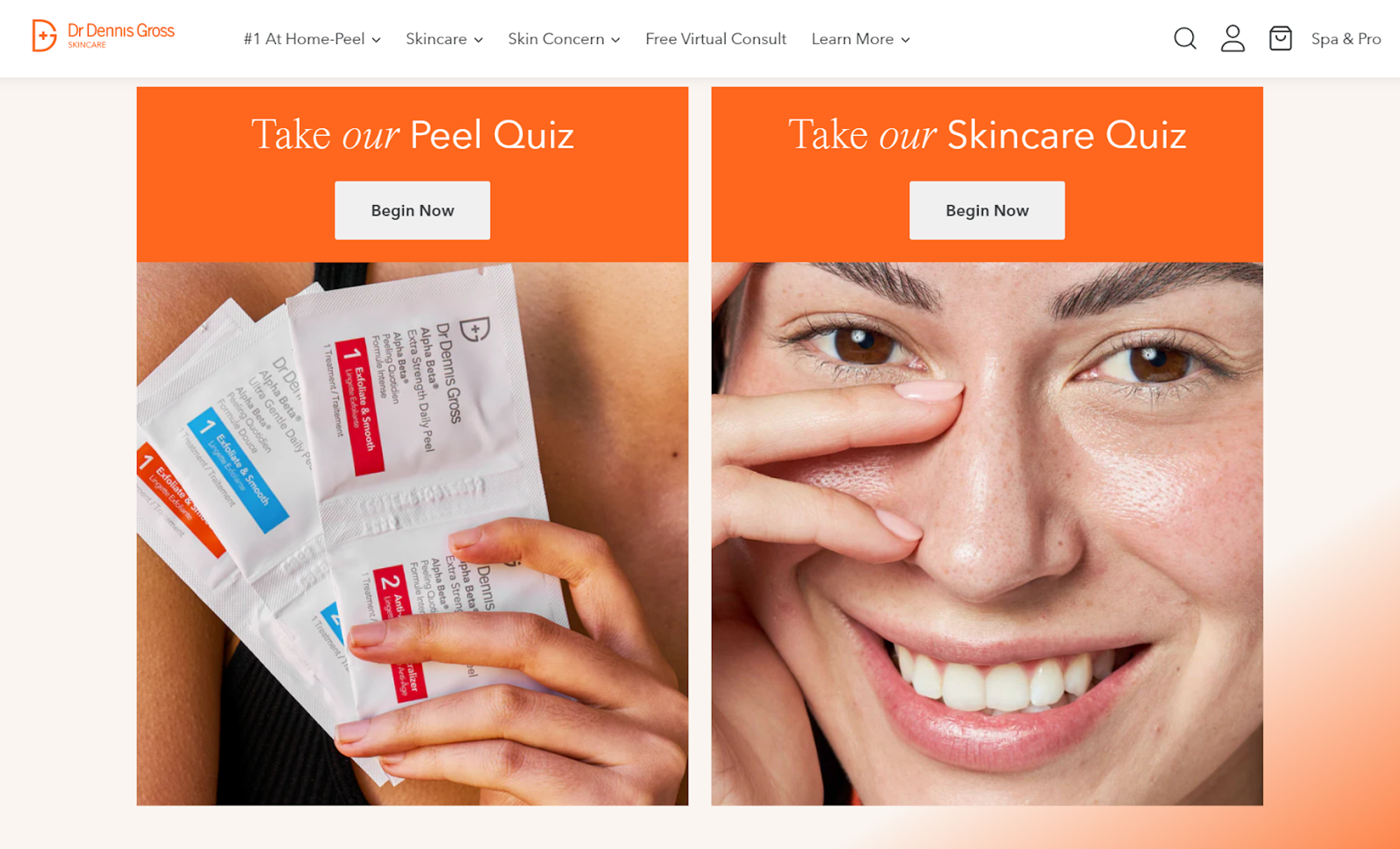
2. Give them a shoutout & put the spotlight on them
When it comes to user-generated content creation, brands often overlook small-time creators in favor of the more popular ones.
While that helps boost overall visibility, it also discourages general audience participation and eats into your brand humanization strategy.
After all, why would people bother to create UGC videos when you don't even notice them? To avoid this, you could:
- Expand your source channels for user-generated material
- Acknowledge one-off submissions
- Host themed events that cater exclusively to smaller creators
- Create culturally sensitive montages to celebrate specific audience groups
- Surf community threads to identify niche but well-known creators/contributors
Implementing these tactics can foster a cycle of engagement that resonates across your entire user base and not just the big names. And it also creates a sense of authenticity in marketing efforts.
Besides, it can also enhance how customers perceive you and directly improves brand loyalty.
3. Create active engagement on social media channels
Social media sites are hands-down the best source for collecting UGC content. TikTok and Instagram reels alone can give you enough ideas for all your brand storytelling. and cross-platform marketing campaigns
But how do you get your audience to create content on these channels in the first place? More importantly, how can you adjust your moderation guidelines to collect that material?
To start with, you can:
- Actively engage with user posts & reels (like, share, tag and comment)
- Capitalize on running trends to invite contributions (memes, audio bytes, etc.)
- Filter content through hashtags to align material with campaign themes
- Review captions and tags to find appropriate & relatable customer stories
- Use giveaways and social media mentions to collect submissions in mass volume
Generally, the more you engage with your customer base on such channels, the better your chances are of collecting such content. Even better, this will directly feed into your social media marketing strategy.
Tortuga Backpacks is proof of this. The brand used their most compelling social media videos to build high-performing product description pages. Now, Tortuga Backpacks can showcase compelling customer stories on its site while highlighting its social media presence.
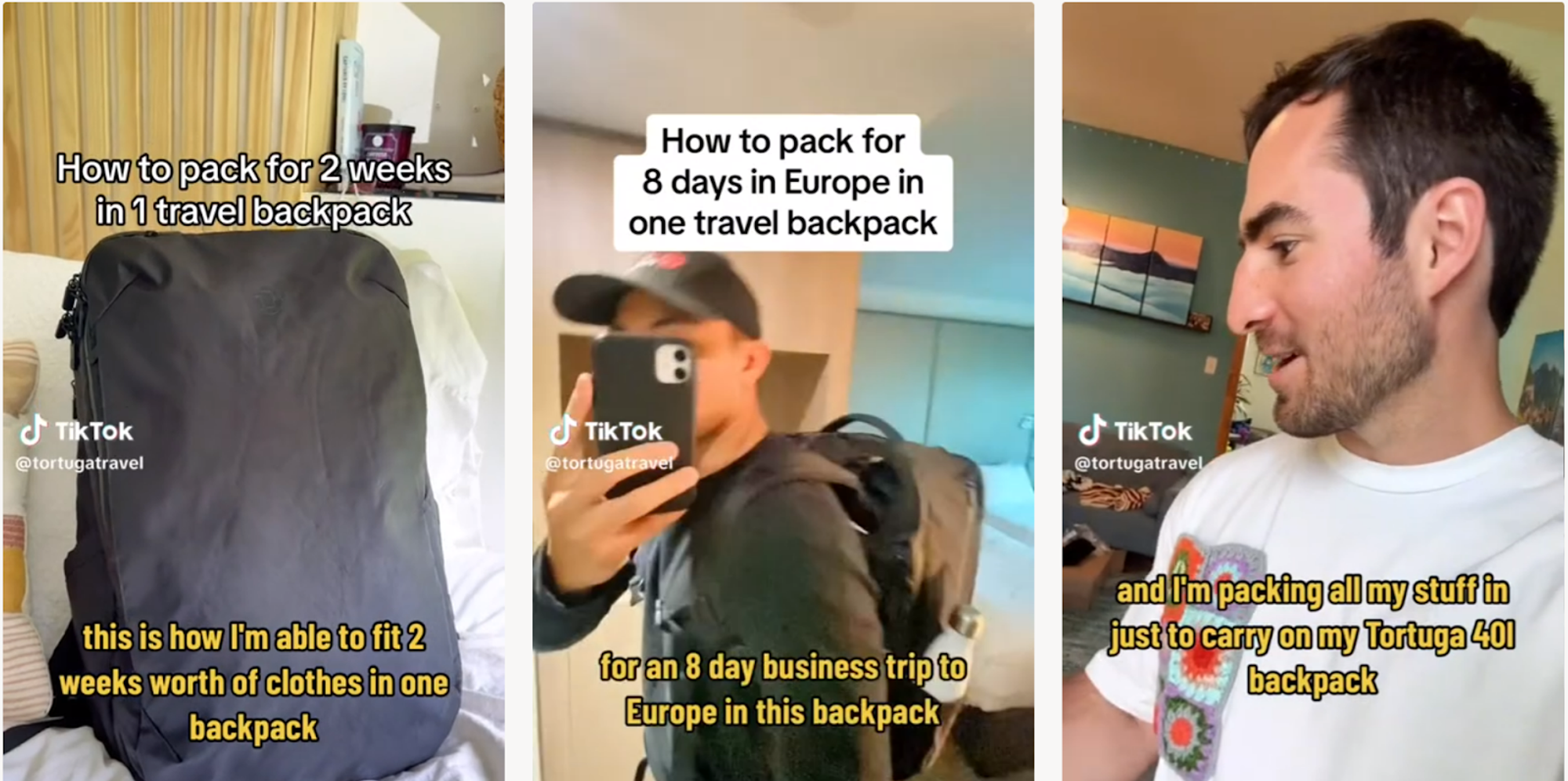
4. Build long-term creator partnerships
Apart from affiliate ads and promotions, influencer/creator partnerships are one of the most popular digital marketing trends today.
Now, influencers have a broader reach and better mass appeal. A collaboration with them can certainly boost your brand visibility. However, since they are known to accept sponsorships and paid endorsements, users may view their material as somewhat superficial.
UGC creators, though, mostly work independently and have a relatively small reach. Additionally, their opinions on your product/brand can be polarizing, to say the least.
The trick is to find authentic UGC creators/influencers and balance contributions from both parties. How you do that will be specific to your social media marketing strategy.
But we can help you when it comes to building fruitful, professional relationships with such figures. A few tips here would be to:
- Find creators already involved in your niche (like Rabch.jpg & Notebook Therapy)
- Set clear campaign objectives and goals to streamline the communication process
- Establish a defined style guide for material related to your brand (helps avoid friction)
- Provide thorough briefs to eliminate any confusion regarding post/video topics
- Have a dedicated review process to discuss emerging issues (content tone, etc.)
That said, it's best to be hands-on with UGC creators/influencers. That doesn't mean you limit their agency or creativity. It's simply to ensure your brand image stays cohesive across multiple platforms.
5. Invite user opinion for montages & compilations
Review montages and compilations are a pretty recent emergence in UGC videos. You know the ones where several customers talk about positive brand experiences in a single video?
While that's not technically distinct from a UGC video testimonial, the process for creating such content and its impact is vastly different.
goPure presents an excellent example. One of goPure's concerns involved user engagement. The brand wanted to create a community by incorporating customer testimonials from various sources.
So, we designed video carousels for the product description pages to showcase just that. In other words, grounded experiences from real people —distilled into a single, actionable format.
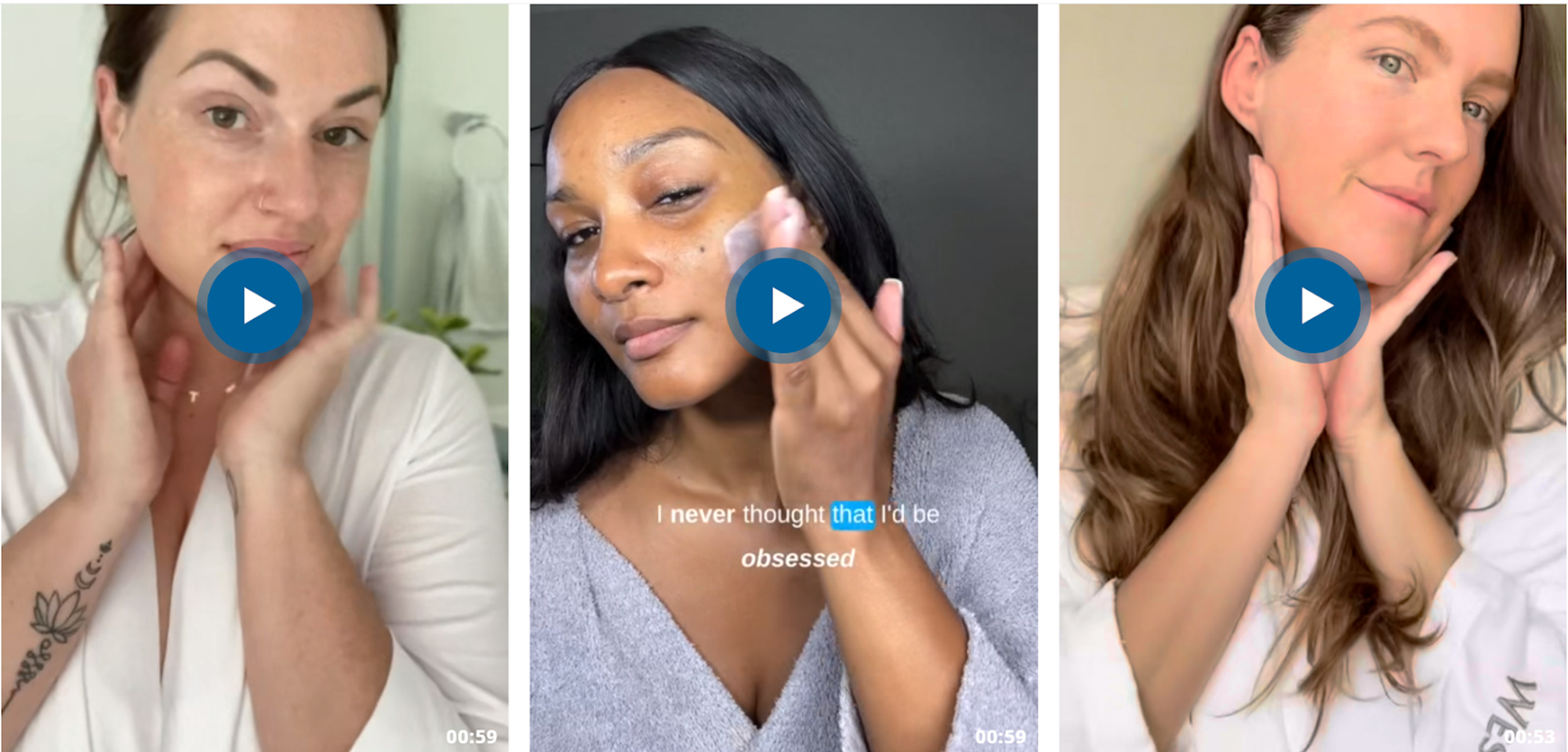
You can do something similar. Send out a mass invite for your customers to share their individual experiences. Then, cherry-pick the best ones, compile them into a montage and publish it. Bonus points if you manage to tag the people you chose.
There aren't any tips to guide you here. But we can leave you with a core idea: ‘Forget the individual story. Instead, tell people about the collective one.’
Don your UGC marketing hat with Videowise
You know about the most popular formats for UGC videos and the methods for collecting such content. Now, all you need to do is incorporate them into your marketing plan.
But that requires a bit of strategic finesse and considerable technical wizardry. So, why trudge through it alone when you can have Videowise as a partner?
Source reels and embed them into your site as social proof. Redesign your product pages as shoppable videos and add compelling customer stories—with Videowise, you can do all that and more.
In fact, why don't you read about how leading brands—including True Classic and several other brands—did the same?
Share

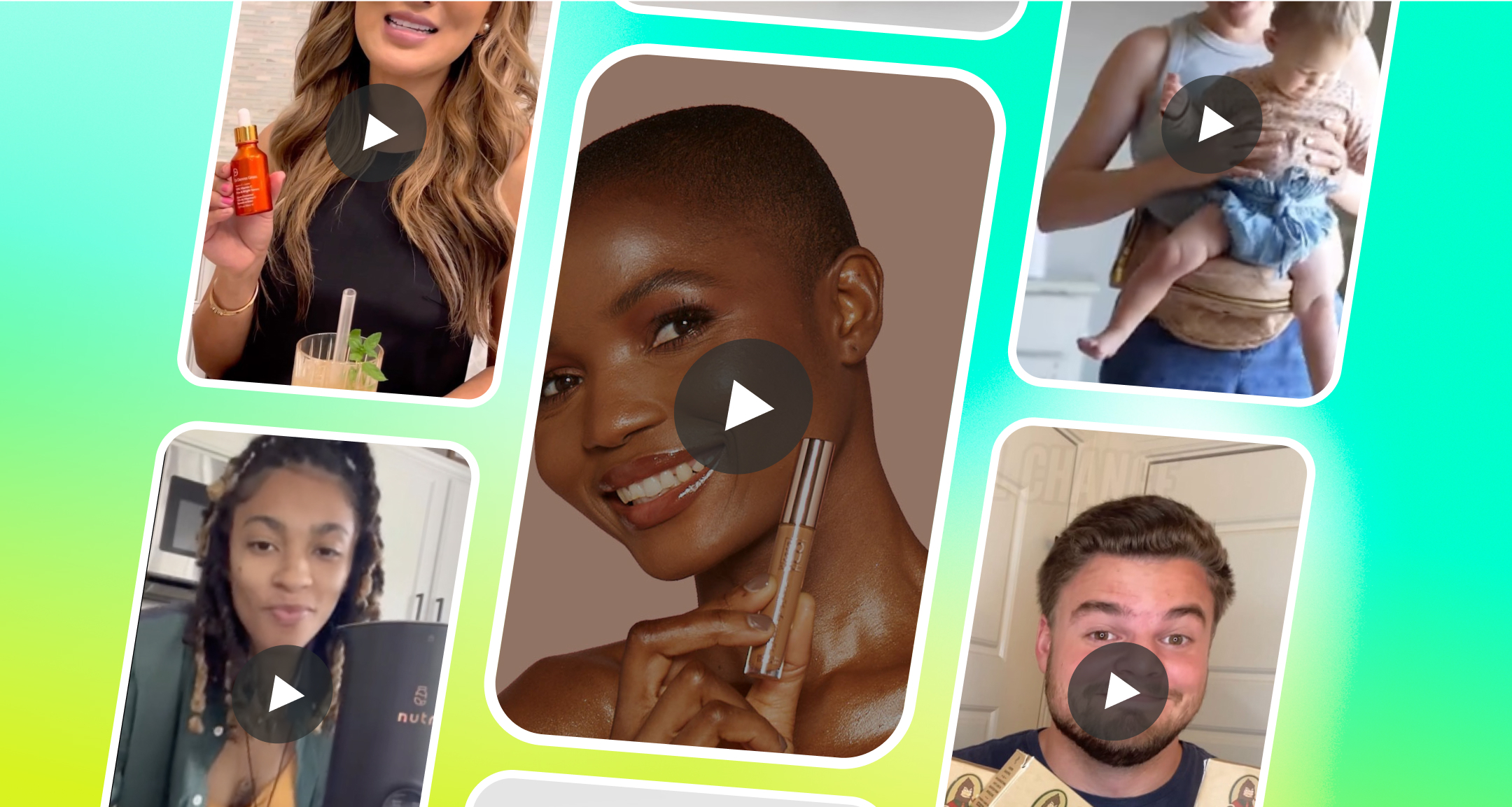


.jpg?width=420&height=420&name=live%20shopping%20top%205%20fashion%20(1).jpg)